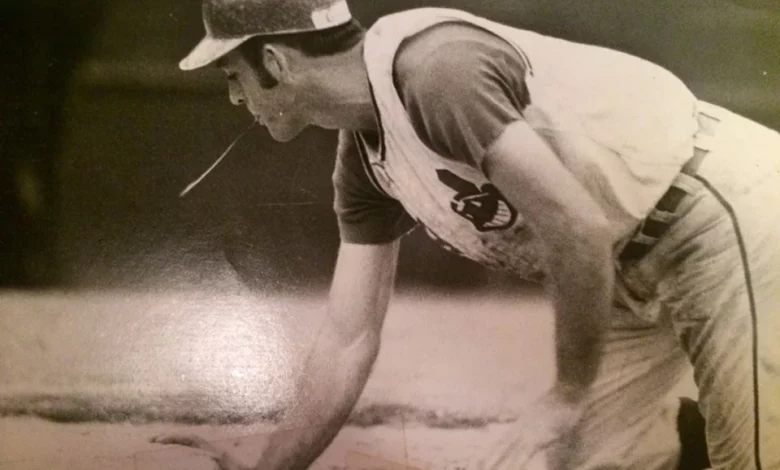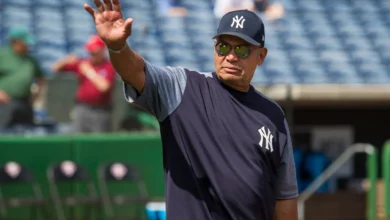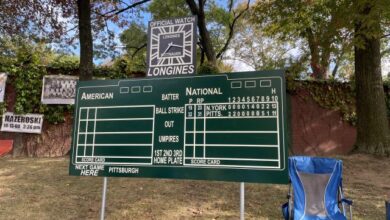
April 8, 1971. The Cleveland baseball team, then known as the Indians, hosted the Boston Red Sox in their home opener. The Red Sox led, 2-1, going into the bottom of the ninth inning. With runners on second and third and two outs, the Indians’ batter was a 27-year-old rookie who had languished in the minor leagues for eight undistinguished years. He didn’t even find out he had made the team out of spring training until his birthday five days before. Many of those that remained from the crowd of 40,462, accustomed to disappointment, headed to the exits. After all, what were the odds of this unheralded rookie getting a big hit and winding up a hero? Was this the best manager Al Dark could do?
In the previous game, the Indians’ season opener at Detroit, the Tigers won, 8-2, beginning what would surely be another dismal season for the hapless Indians. In that game, the rookie had garnered his first major-league hit and driven in a meaningless run in the fifth inning, pinch hitting for pitcher Steve Dunning, his rather accidental single off Mickey Lolich traveling an estimated 15 feet. Earlier in this home opening game, the rookie led off the eighth inning with a pinch-hit double off Boston’s Sonny Siebert and scored the Indians’ lone run.
Now he was up with the game hanging in the balance. The rookie responded by cracking a long single to center field against Ken Tatum, sending the runners home to give the Indians an exciting 3-2 victory. Thus Gomer Hodge became an instant folk hero.
“We want Gomer!”
Born Harold Morris Hodge in Rutherfordton, North Carolina, the switch-hitter picked up the nickname Gomer from a minor-league teammate for his southern drawl and vague resemblance to actor Jim Nabors, who played the character Gomer Pyle on television. After eight years in the minors, Hodge, primarily a first baseman, had slashed .259/.316/.358 with 37 HR and 289 RBIs. However, over the 1969 and 1970 seasons in double-A and triple-A, he had batted .289/.354/.420, 20 HR and 102 RBIs. That earned him an invitation to spring training with the big club in 1971.
In the fourth game of the season on April 11 against those same Red Sox, in the eighth inning with the bases loaded, the Indians already ahead, 6-2, and their fans chanting “We Want Gomer!,” Dark gave in to their demands. Hodge was called upon to pinch hit. Again facing Tatum, Hodge cracked a 400-foot double that hit the top of the center field wall for a run-scoring double. The hit was meaningless, but no matter. The Cleveland fans went wild. The Indians, picked to finish in last place in the American League East Division, were 3-1. “Gomer Mania” had officially begun in Cleveland.
“I’m hitting 4.000!”
After the game, the media asked Hodge how it felt to start out his career 4-for-4 with a 1.000 average. He famously replied, “Golly, fellas, I’m batting 4.000!” The media played up his hayseed persona and folksy manner of speaking, often unkindly quoting him in his southern accent. For example, discussing this fourth hit, Hodge was quoted as saying, “Dad gum, if that ball had goed over that sign, I’d of called it a career. Everythin’s so unreal.”
“I don’t like those reporters who make me sound dumb,” Hodge told Ralph Novak of the Williamsport Daily News on April 23. “The guy who plays Gomer on television acts dumb but he makes his money doing that. I play baseball.”
“The pitcher’s thinking about getting ahead in the count.”
Hitting a baseball has been described as the most difficult act in all of sports. Pinch hitting may be even more difficult. In today’s game, teams value versatility off the bench. Carrying a man on a team for his pinch-hitting prowess has gone the way of the three-inning save. However, pinch hitting was important in Hodge’s day. There was no designated hitter and managers had more hitters to call on from the bench. They used them to improve their odds of getting a run in when needed.
Baseball has had its John Vander Wals and Steve Brauns, guys who excel at pinch hitting even to the point where, oddly, they hit better in that role compared to when they’re in the regular lineup. Usually they’re good at being ready and able to hit a first-pitch fastball. John Milner, a good pinch hitter in his own right, revealed the secret to Dan Donovan of The Pittsburgh Press in 1979. “I talked with [his former teammate on the Mets] Ed Kranepool about pinch hitting,” said Milner. “He says to remember that when a pitcher sees a pinch hitter, he’s thinking about getting ahead in the count.”
“Greatest thing to ever hit Cleveland.”
The Indians appeared to have a similar pinch hitter extraordinaire in Hodge. Gushed teammate Ken Harrelson to the Star-News on May 11, “Greatest thing in sports to ever hit Cleveland,” perhaps temporarily forgetting names like Jim Brown, Bob Feller, Otto Graham and Nap Lajoie.
But it was true no Indians player had been so popular in a long time. Hodge was getting standing ovations in Cleveland even after striking out. The local newspaper started Gomer’s Gang, a fan club for Hodge. They would sit in a section designated Hodge’s Lodge. The Indians honored him with Gomer Hodge Day just seven weeks into his major-league career. Hard-throwing hurler Sam McDowell considered Hodge a good-luck charm. When he won his fifth consecutive game on June 8, he credited having breakfast with Hodge before each game.
“They don’t know Gomer from Adam’s cat.”
Hodge remained mystified about his popularity but discounted the notion it was due to his image. “I played in Mexico during the winter where they don’t know Gomer from Adam’s cat,” he said, “and I was the popularest [sic] guy on the team.”
The magic continued. On April 28 in Anaheim, his pinch-hit sacrifice fly in the top of the ninth was the margin of victory in a 3-2 win over the California Angels. Against the Yankees at home on May 21, Hodge’s two-run pinch-hit single in the bottom of the ninth off Lindy McDaniel was the difference in an 8-7 victory for Cleveland. He repeated the feat two days later in the bottom of the ninth in the second game of a doubleheader. This time the victim was Yankees pitcher Steve Kline. Hodge’s ground-ball pinch-hit single to right field sent Eddie Leon home with the winning run in a 2-1 win.
The magic wears off
Alas, the magic would soon wear off. Hitting .256/.313/.326 at the end of June, Hodge finished the 1971 season at .205/.256/.277, 1 HR and 9 RBIs. He remained popular despite his second-half slump. Meanwhile, the 1971 Indians finished last in the division at 60-102. In the process, they fired two managers and a general manager. Harrelson, then only 29, said to hell with it in midseason and retired to become a professional golfer.
The Indians felt Hodge should spend 1972 in triple-A to improve his fielding. Hodge thought that ridiculous, as he was used in the field only eight times in 1971. In any event, his minor-league manager in Portland soon realized Hodge was more valuable in a pinch-hitting role. So much for working on defense. Hodge never returned to the majors and ended his playing career after seven games in single-A in 1976. Hodge died of Lou Gehrig‘s Disease in 2007.




